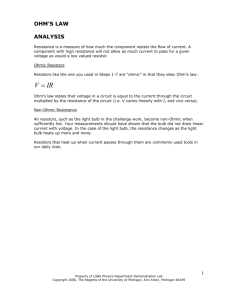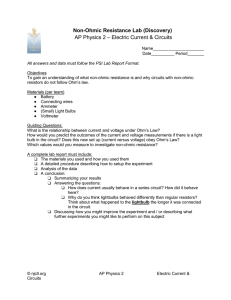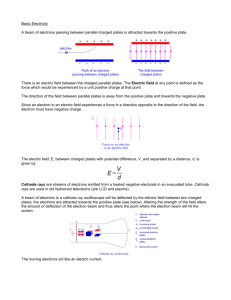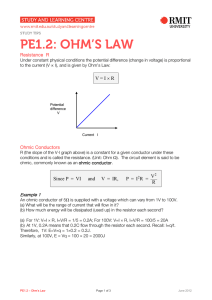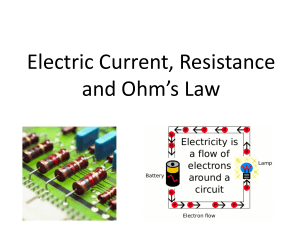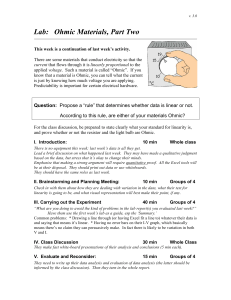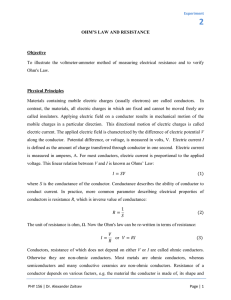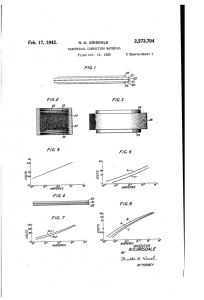19.2.2 Ohmic and non
advertisement
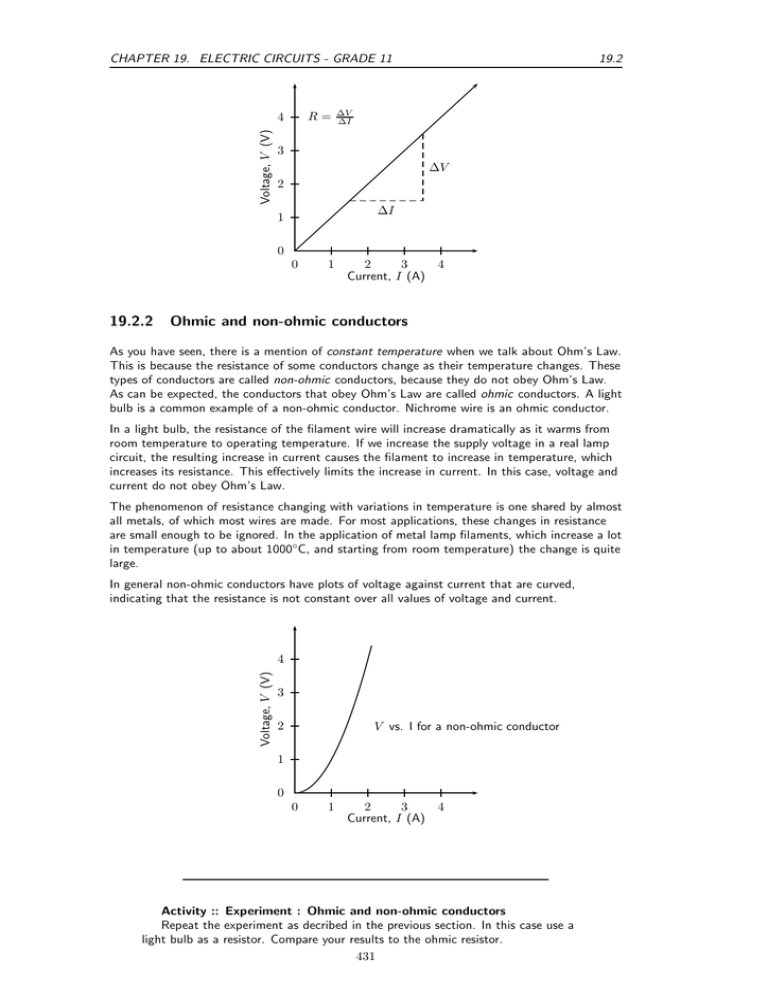
CHAPTER 19. ELECTRIC CIRCUITS - GRADE 11 R= Voltage, V (V) 4 19.2 ∆V ∆I 3 ∆V 2 ∆I 1 0 0 19.2.2 1 2 3 4 Current, I (A) Ohmic and non-ohmic conductors As you have seen, there is a mention of constant temperature when we talk about Ohm’s Law. This is because the resistance of some conductors change as their temperature changes. These types of conductors are called non-ohmic conductors, because they do not obey Ohm’s Law. As can be expected, the conductors that obey Ohm’s Law are called ohmic conductors. A light bulb is a common example of a non-ohmic conductor. Nichrome wire is an ohmic conductor. In a light bulb, the resistance of the filament wire will increase dramatically as it warms from room temperature to operating temperature. If we increase the supply voltage in a real lamp circuit, the resulting increase in current causes the filament to increase in temperature, which increases its resistance. This effectively limits the increase in current. In this case, voltage and current do not obey Ohm’s Law. The phenomenon of resistance changing with variations in temperature is one shared by almost all metals, of which most wires are made. For most applications, these changes in resistance are small enough to be ignored. In the application of metal lamp filaments, which increase a lot in temperature (up to about 1000◦C, and starting from room temperature) the change is quite large. In general non-ohmic conductors have plots of voltage against current that are curved, indicating that the resistance is not constant over all values of voltage and current. Voltage, V (V) 4 3 2 V vs. I for a non-ohmic conductor 1 0 0 1 2 3 4 Current, I (A) Activity :: Experiment : Ohmic and non-ohmic conductors Repeat the experiment as decribed in the previous section. In this case use a light bulb as a resistor. Compare your results to the ohmic resistor. 431
